Japan expects only 1-2 percent of its recently agreed upon US$550 billion US fund to be in the form of actual investment, with the bulk of the funds to be dispersed via loans, the nation’s top chief negotiator Ryosei Akazawa said.
At the same time, Tokyo would save roughly ¥10 trillion (US$68 billion) through lower tariff rates in its deal with the US, he said.
The US$550 billion investment framework will be a combination of investments, loans and loan guarantees provided by financial institutions backed by the Japanese government, Akazawa said on public broadcaster NHK on Saturday night. Of the total, investment would be worth 1 percent or 2 percent and the US and Japan would split the profits of that investment at a ratio of 90-10, he said. Japan had originally proposed a 50-50 ratio, he added.
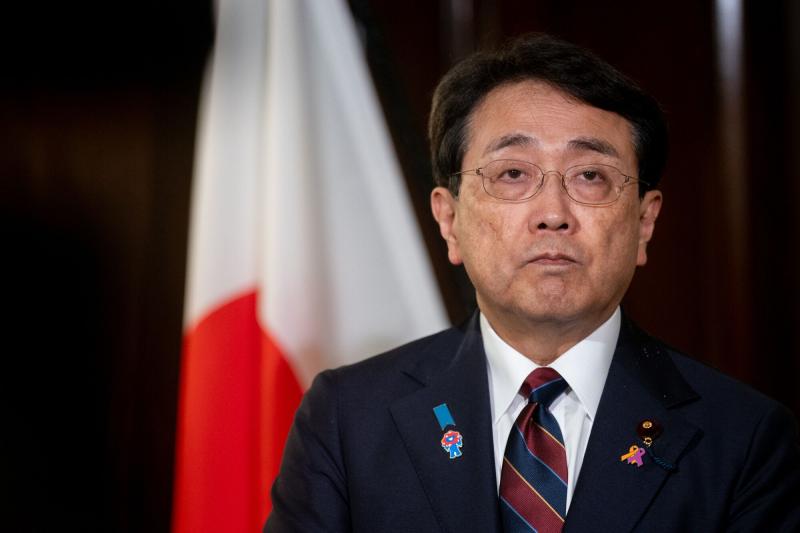
Photo: Stefani Reynolds, Bloomberg
The fund is a centerpiece of the deal announced by the two sides that will impose 15 percent tariffs on Japanese cars and other goods. But the details given by Akazawa suggest the Japanese may end up giving up much less than at first glance.
“It’s not that US$550 billion in cash will be sent to the US,” Akazawa said. “By letting the US have 90 percent of the profits rather than 50 percent, I think Japan’s loss will be at most a couple of tens of billions of yen. People are saying various things, such as ‘You sold out Japan,’ but they’re wrong.”
For the loans provided through the program, Japan will simply be collecting the interest payments, and for the loan guarantees, if nothing happens Japan will also be collecting just the fees, Akazawa said. “For that part, Japan’s just making money,” he said.
Akazawa also clarified that the investment program won’t be only supporting Japanese and US firms. As a potential example, he cited a Taiwanese semiconductor firm building a factory in the US.
“We’d like to put the US$550 billion in place during President Trump’s term,” Akazawa added.
Further details of the implementation of the US-Japan deal remain unclear, including when the new tariff rates would take effect and when the new investment vehicle would kick off. There's been no joint document signed by both sides for the deal, although the White House has published a fact sheet.
“If you say something like, ‘Let’s create a joint document,’ they will say, ‘We’ll lower tariffs after the document is created,’” Akazawa said. In order to not lose time, “we will demand that they issue an executive order to lower tariffs as soon as possible, regardless of a document.”
Last week, Akazawa said he expects universal tariffs on Japan’s shipments to be lowered to 15 percent on Aug. 1, while he said he wanted the car tariffs to be cut to 15 percent as soon as possible without specifying a date.
The Trump administration has touted the deal with Japan as a potential model for others. On Sunday, the US and European Union agreed on a deal that will see the bloc face 15 percent tariffs on most of its exports, with the EU pledging to invest US$600 billion in the US.
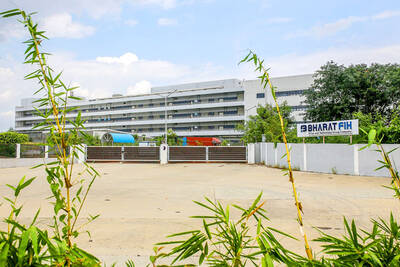
SETBACK: Apple’s India iPhone push has been disrupted after Foxconn recalled hundreds of Chinese engineers, amid Beijing’s attempts to curb tech transfers Apple Inc assembly partner Hon Hai Precision Industry Co (鴻海精密), also known internationally as Foxconn Technology Group (富士康科技集團), has recalled about 300 Chinese engineers from a factory in India, the latest setback for the iPhone maker’s push to rapidly expand in the country. The extraction of Chinese workers from the factory of Yuzhan Technology (India) Private Ltd, a Hon Hai component unit, in southern Tamil Nadu state, is the second such move in a few months. The company has started flying in Taiwanese engineers to replace staff leaving, people familiar with the matter said, asking not to be named, as the
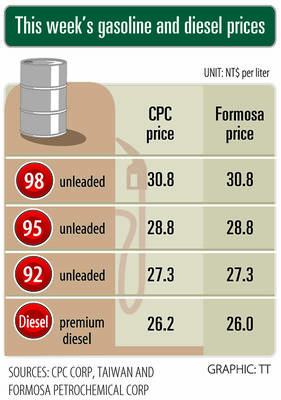
The prices of gasoline and diesel at domestic fuel stations are to rise NT$0.1 and NT$0.4 per liter this week respectively, after international crude oil prices rose last week, CPC Corp, Taiwan (台灣中油) and Formosa Petrochemical Corp (台塑石化) announced yesterday. Effective today, gasoline prices at CPC and Formosa stations are to rise to NT$27.3, NT$28.8 and NT$30.8 per liter for 92, 95 and 98-octane unleaded gasoline respectively, the companies said in separate statements. The price of premium diesel is to rise to NT$26.2 per liter at CPC stations and NT$26 at Formosa pumps, they said. The announcements came after international crude oil prices
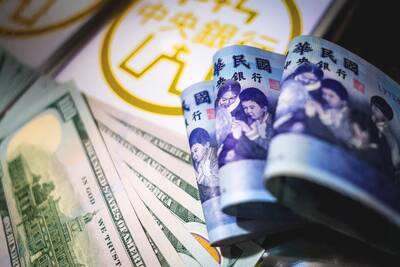
DOLLAR SIGNS: The central bank rejected claims that the NT dollar had appreciated 10 percentage points more than the yen or the won against the greenback The New Taiwan dollar yesterday fell for a sixth day to its weakest level in three months, driven by equity-related outflows and reactions to an economics official’s exchange rate remarks. The NT dollar slid NT$0.197, or 0.65 percent, to close at NT$30.505 per US dollar, central bank data showed. The local currency has depreciated 1.97 percent so far this month, ranking as the weakest performer among Asian currencies. Dealers attributed the retreat to foreign investors wiring capital gains and dividends abroad after taking profit in local shares. They also pointed to reports that Washington might consider taking equity stakes in chipmakers, including Taiwan Semiconductor
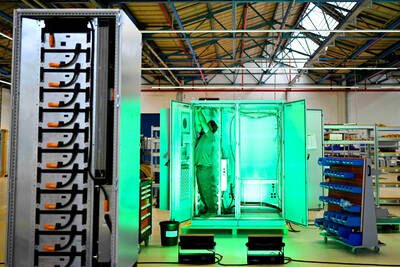
A German company is putting used electric vehicle batteries to new use by stacking them into fridge-size units that homes and businesses can use to store their excess solar and wind energy. This week, the company Voltfang — which means “catching volts” — opened its first industrial site in Aachen, Germany, near the Belgian and Dutch borders. With about 100 staff, Voltfang says it is the biggest facility of its kind in Europe in the budding sector of refurbishing lithium-ion batteries. Its CEO David Oudsandji hopes it would help Europe’s biggest economy ween itself off fossil fuels and increasingly rely on climate-friendly renewables. While